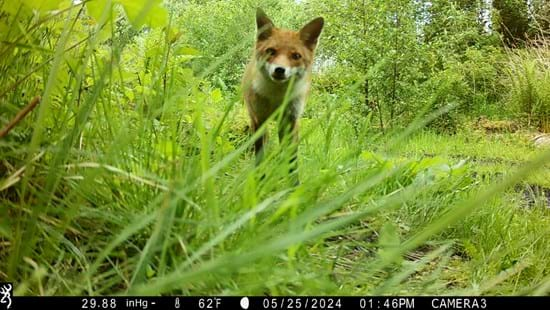A new study is being launched that could increase understanding of the biodiversity value of brownfield sites on the highways estate.
National Highways' Historical Railways Estate (HRE), Balfour Beatty and Edinburgh Napier University are partners in an extensive survey into how brownfield sites are assessed for biodiversity value and how they reconnect fragmented habitats.
The study is said to use 'innovative sound surveys and site DNA testing' alongside more traditional techniques such as visual surveys and camera traps to get a detailed picture of biodiversity at five trial HRE sites.
Recent studies have shown that disturbances that typically happens at brownfield sites, such as earth movement during development and vegetation removal, could play an important part in increasing biodiversity as it can mimic natural ecosystem processes.
This could mean that brownfield sites are far more important than first thought in terms of supporting a wide range of wildlife and plants.
Such sites could also help to join fragmented habitats, creating nature highways for pollinators and animals.

A fox caught by a camera trap in Greenock
Five sites in Scotland have been selected for the two-year study, representing the variety of structures and locations, urban and rural, typical of the HRE’s landholding.
They include:
- a mix of overbridges, tunnel and retained land in Greenock
- a similar mix of features at a site in Glasgow
- an overbridge in Williamwood
- an overbridge spanning a former railway in Glencorse
- a viaduct in Bonnyrigg
HRE civil engineer Colin McNicol said: ‘It will be interesting to see how the study helps us adapt and enhance our work to repair and maintain our structures and land assets to help play a part in reducing the current global biodiversity crisis.'
Edinburgh Napier University project lead Jennifer Dodd added: ‘We will use microphones to record sounds in the air and in the soil, often called passive acoustic monitoring, and link this information with the results from other assessment approaches, for example environmental DNA, camera trapping, and traditional visual survey techniques.
‘By combining traditional methods with emerging technologies, this nationally important project will drive forward the development of innovative tools to accurately measure biodiversity, leading to evidence-driven approaches for the recovery and conservation of our precious biodiversity.’
Balfour Beatty project manager Robert Robertson said: ‘The project provides us with an opportunity to reset and reframe how we think about and manage biodiversity, ensuring that we’re leaving behind a lasting, positive environmental legacy in Scotland.’
Following surveys on the ground, guidelines will be produced outlining opportunities to appropriately enhance biodiversity at each of the sites as well as brownfield sites across the HRE and beyond.




